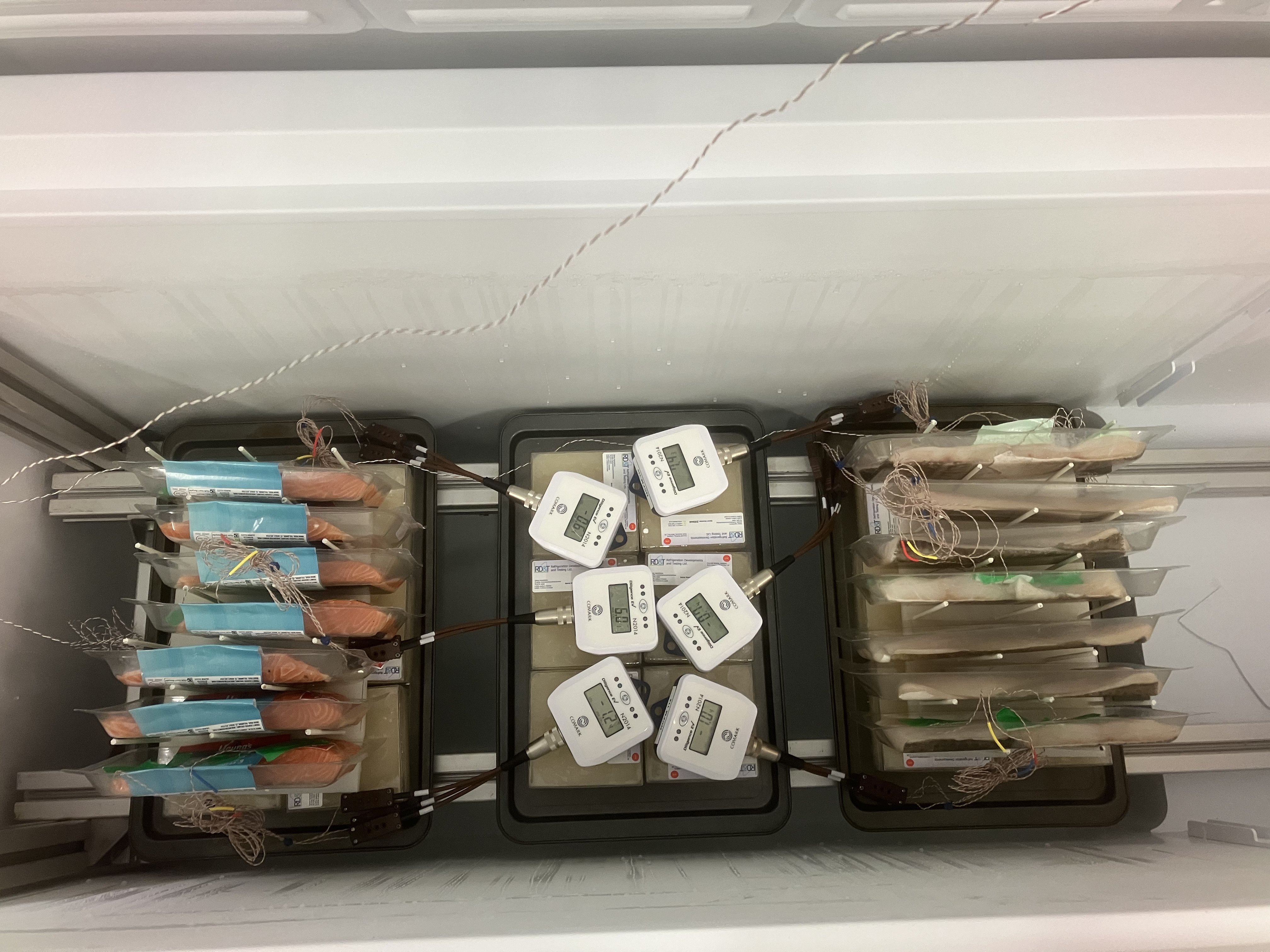A cool way to extend the product life of seafood
Super-cooling is a technique that can be used to preserve fish by cooling and holding it at a temperature below its freezing point without ice forming within it. It has good potential to extend product life of fish, helping to enhance the competitiveness of the UK seafood supply chain, and to reduce food waste.
What is the challenge?
The main challenge in seafood storage is extending the product life of fish without sacrificing its quality. Traditionally, fish is stored at 0°C, which limits its freshness and product life. Freezing seafood at temperatures below zero can extend its product life, but the ice crystals formed by freezing can negatively impact its texture and freshness.
How does this innovation respond to the challenge?
A recent study led by the University of Lincoln and supported by the Seafood Innovation Fund trialled a process called super cooling, a technique that involves cooling fish to temperatures below its normal freezing point (-2°C to -3°C) without ice forming in it. The study demonstrated that a range of fish can be super-cooled successfully. It showed vacuum-packed cod, haddock, salmon, and mackerel can be stably kept in a super-cooled state at -2°C for up to 15 days, and possibly longer.

What is the impact?
The ability to extend the product life of fish while maintaining its quality offers significant potential benefits to seafood producers and retailers. Super cooling offers a more flexible approach to storage and transport in the supply chain, potentially reducing energy consumption and waste.